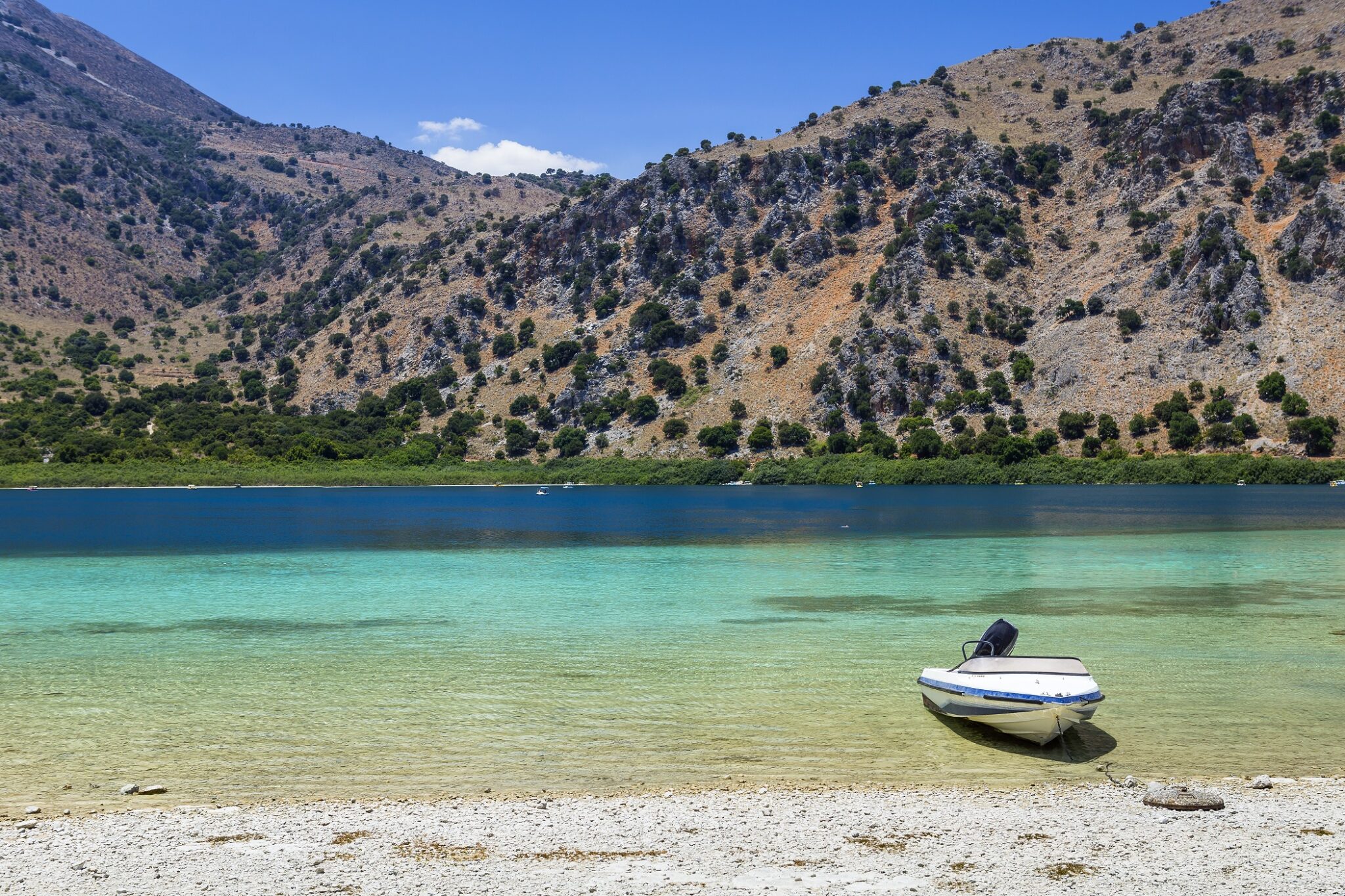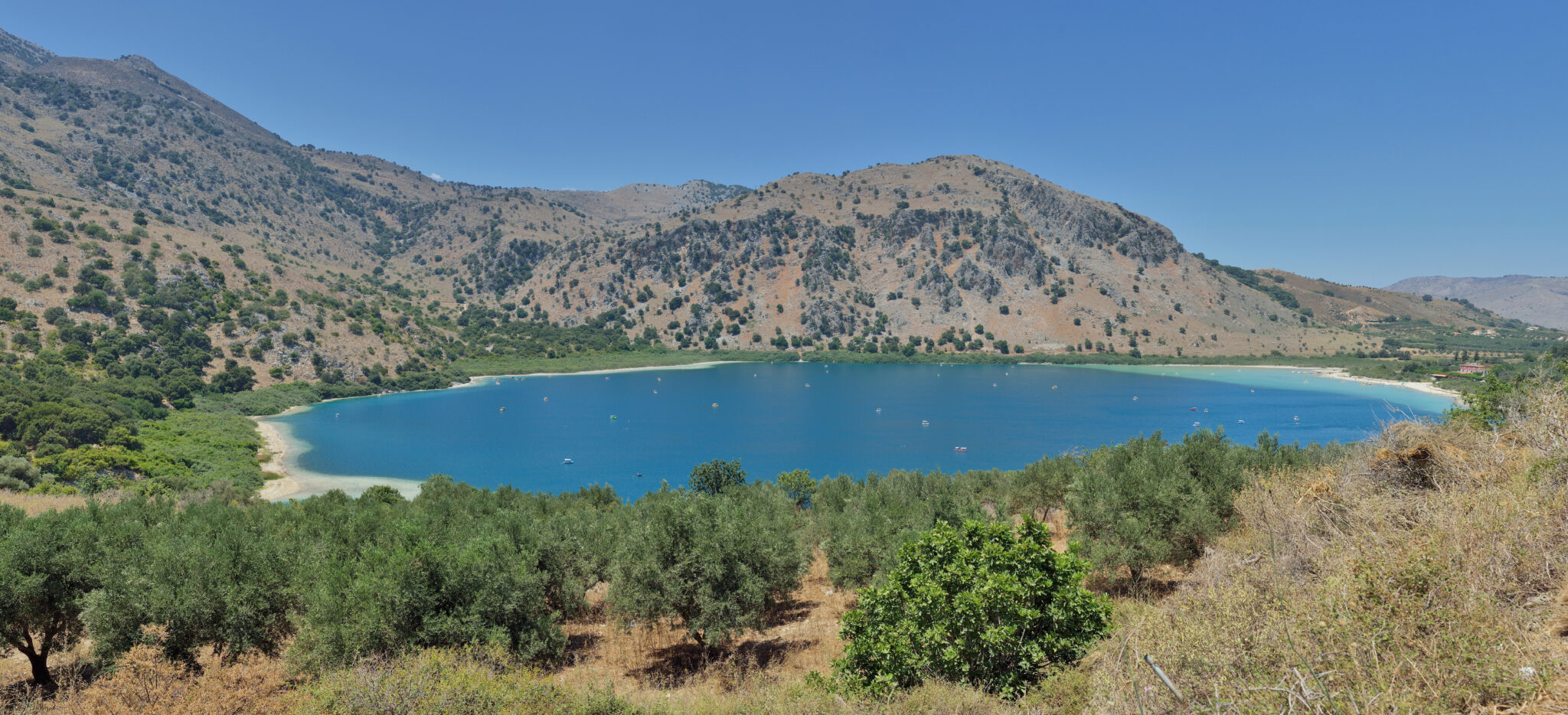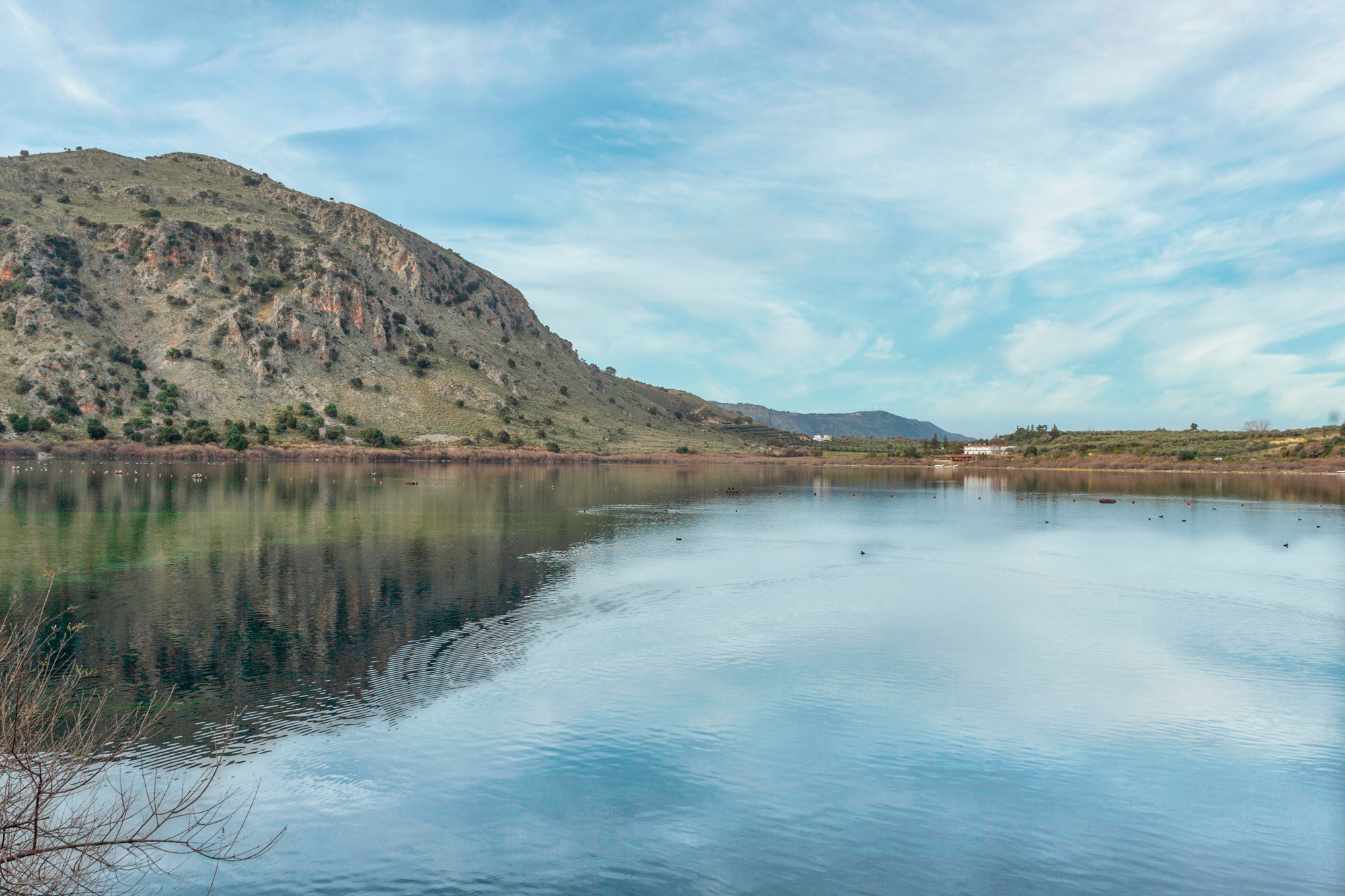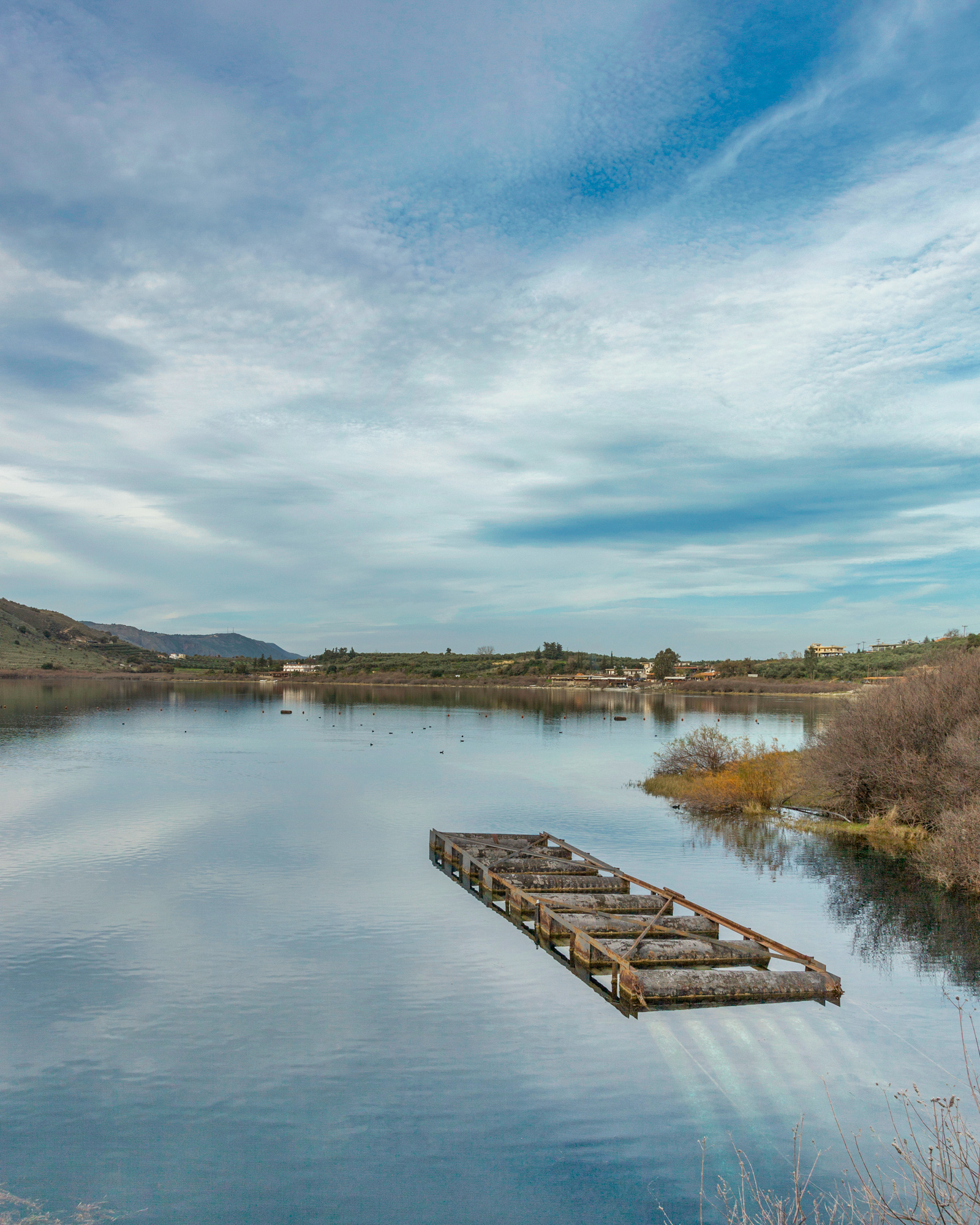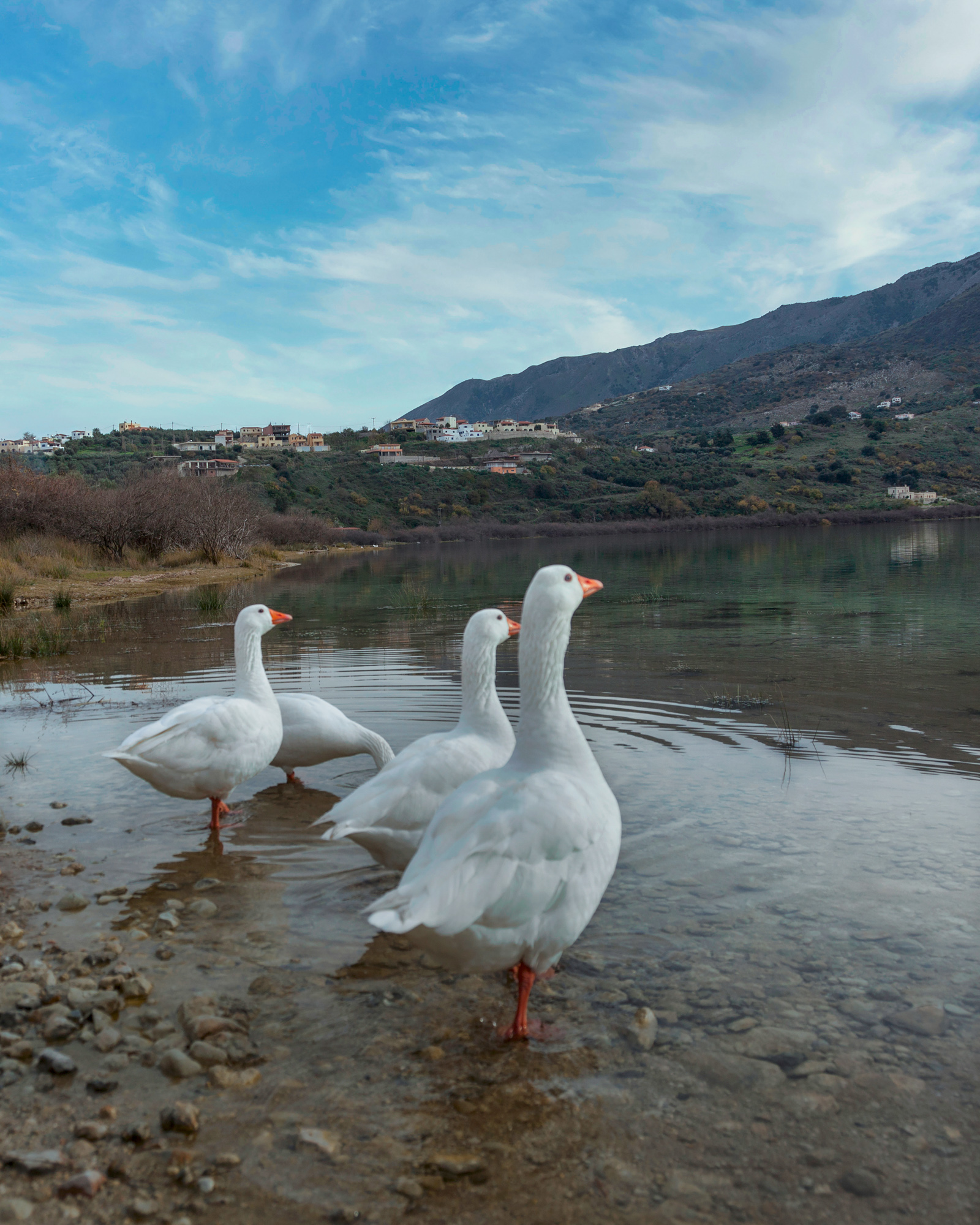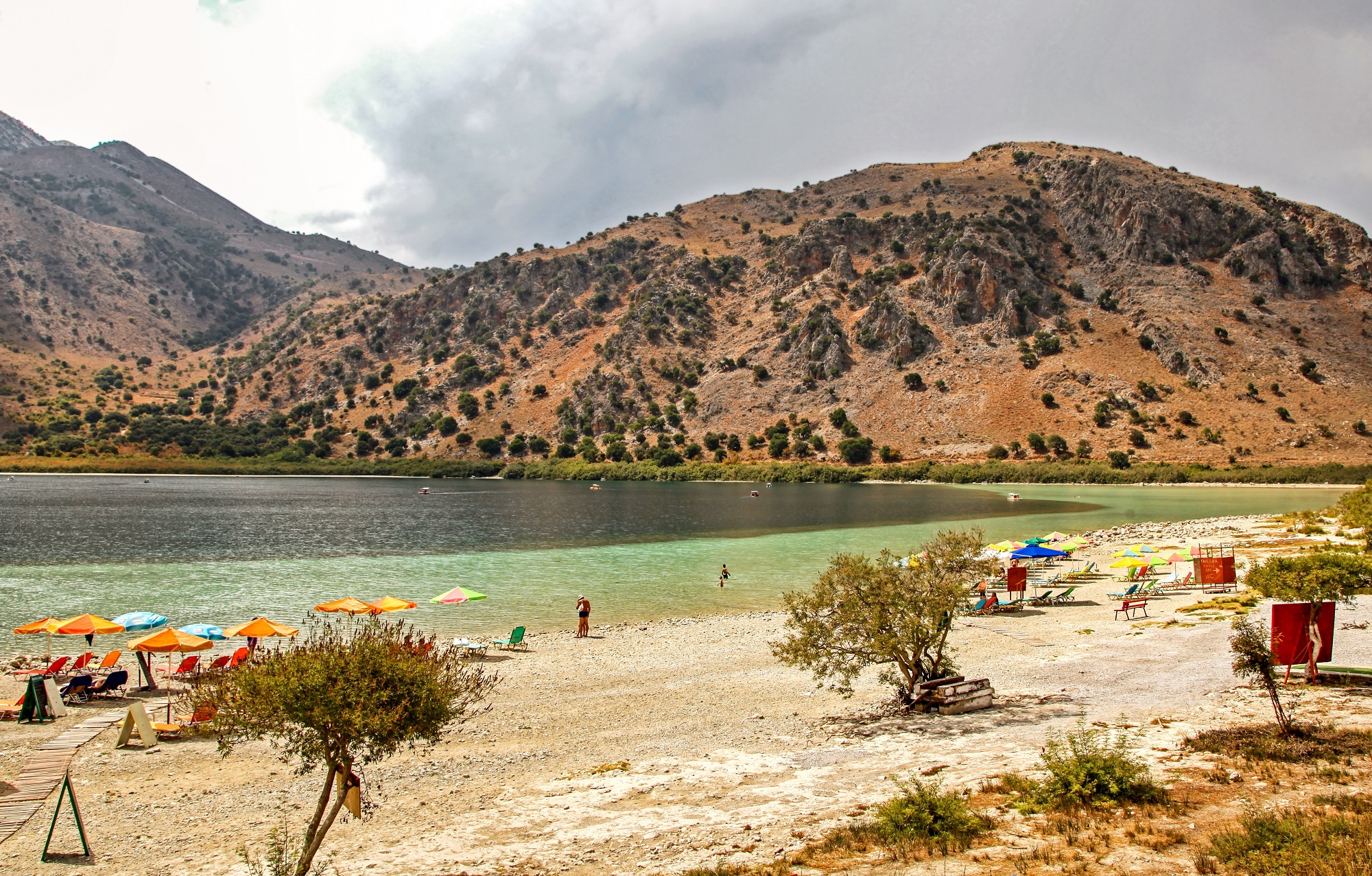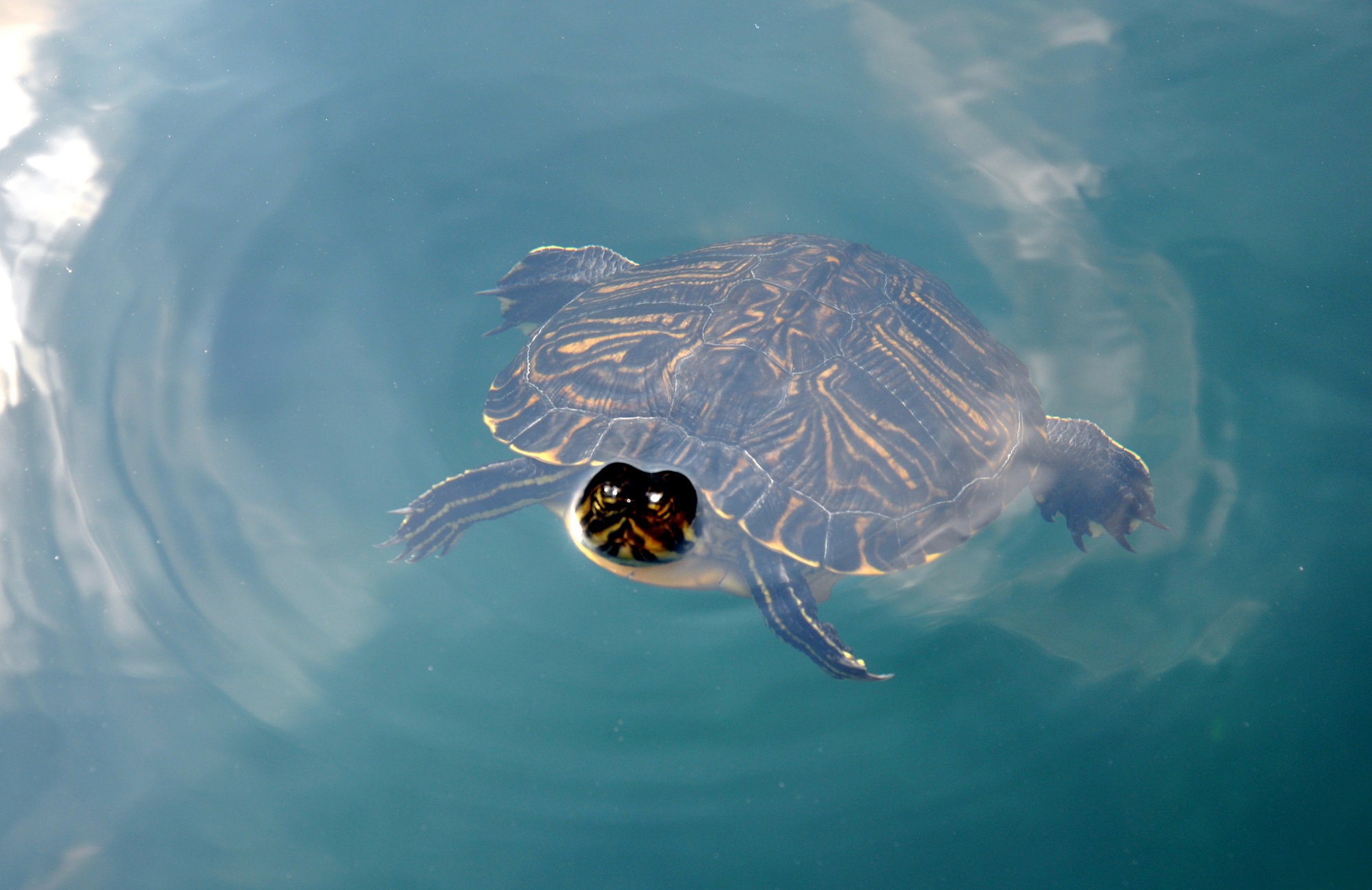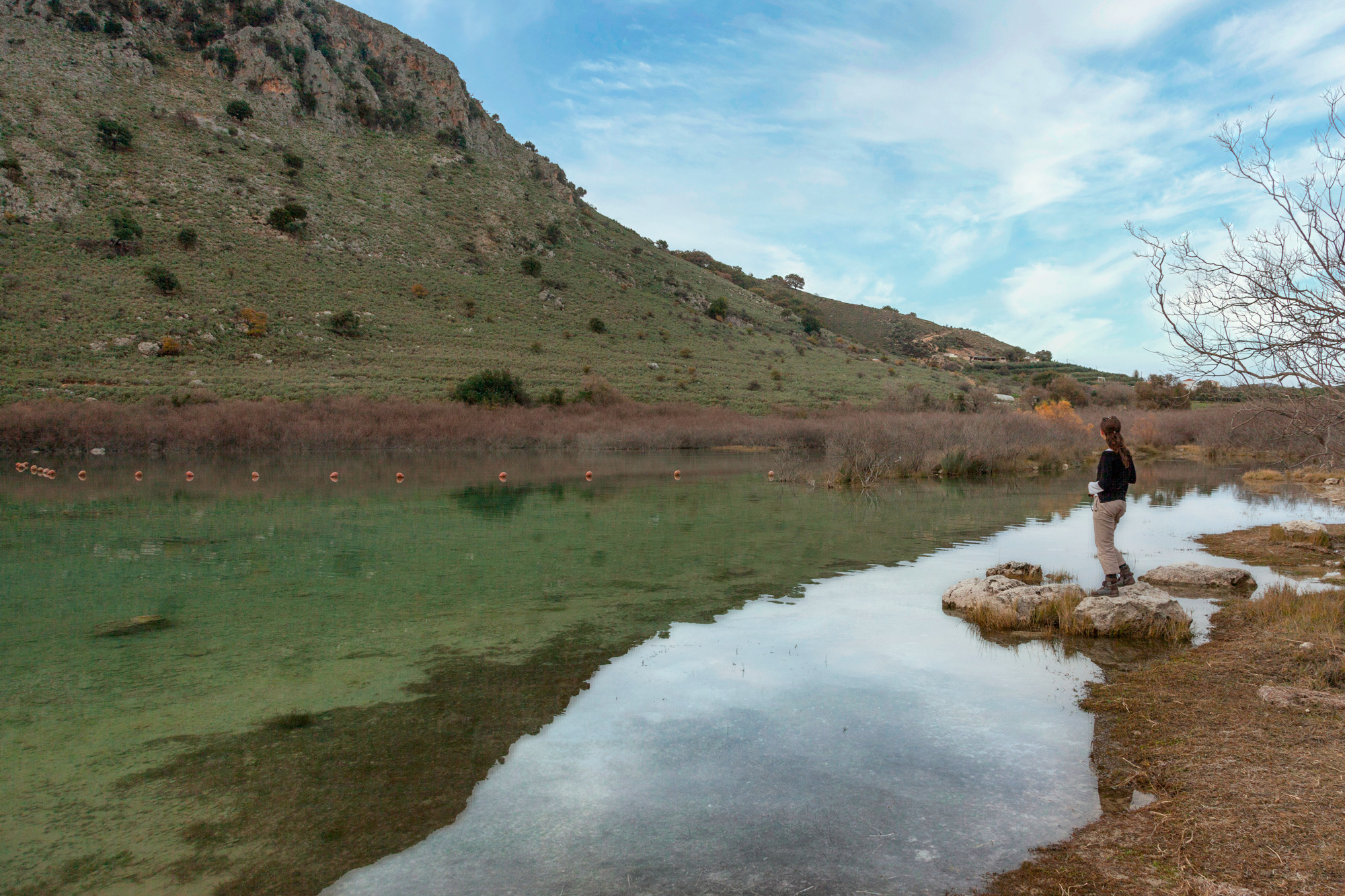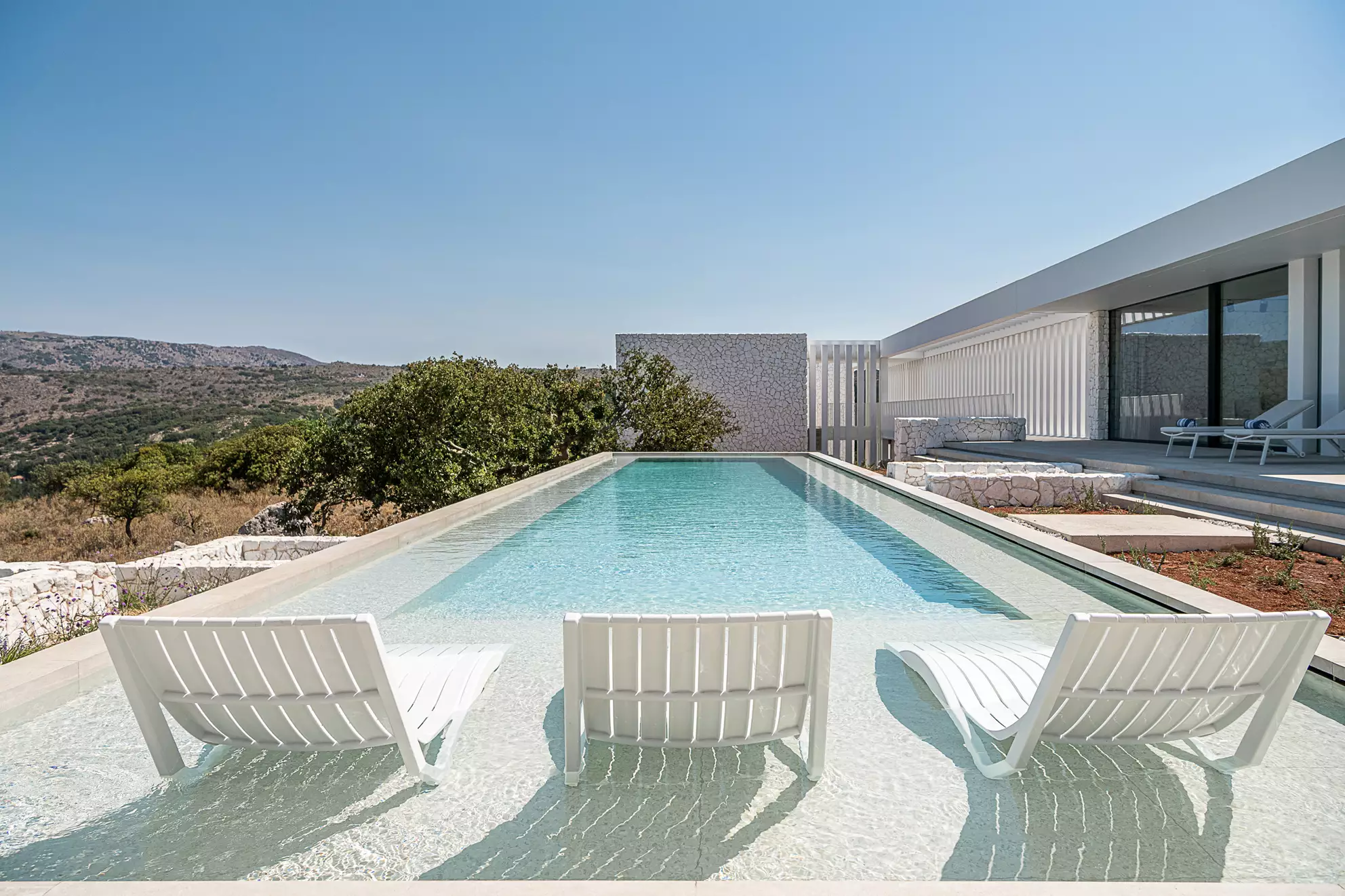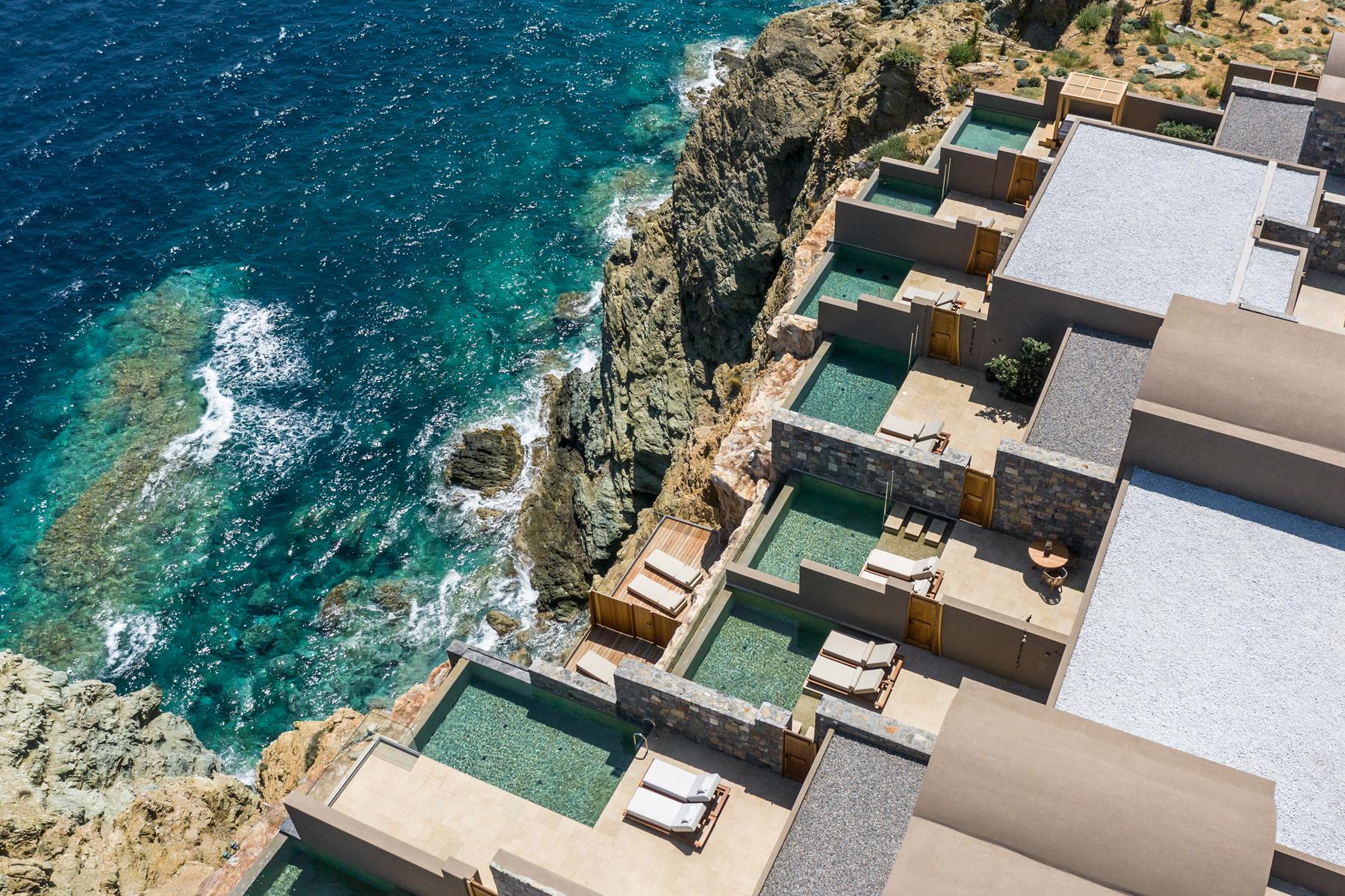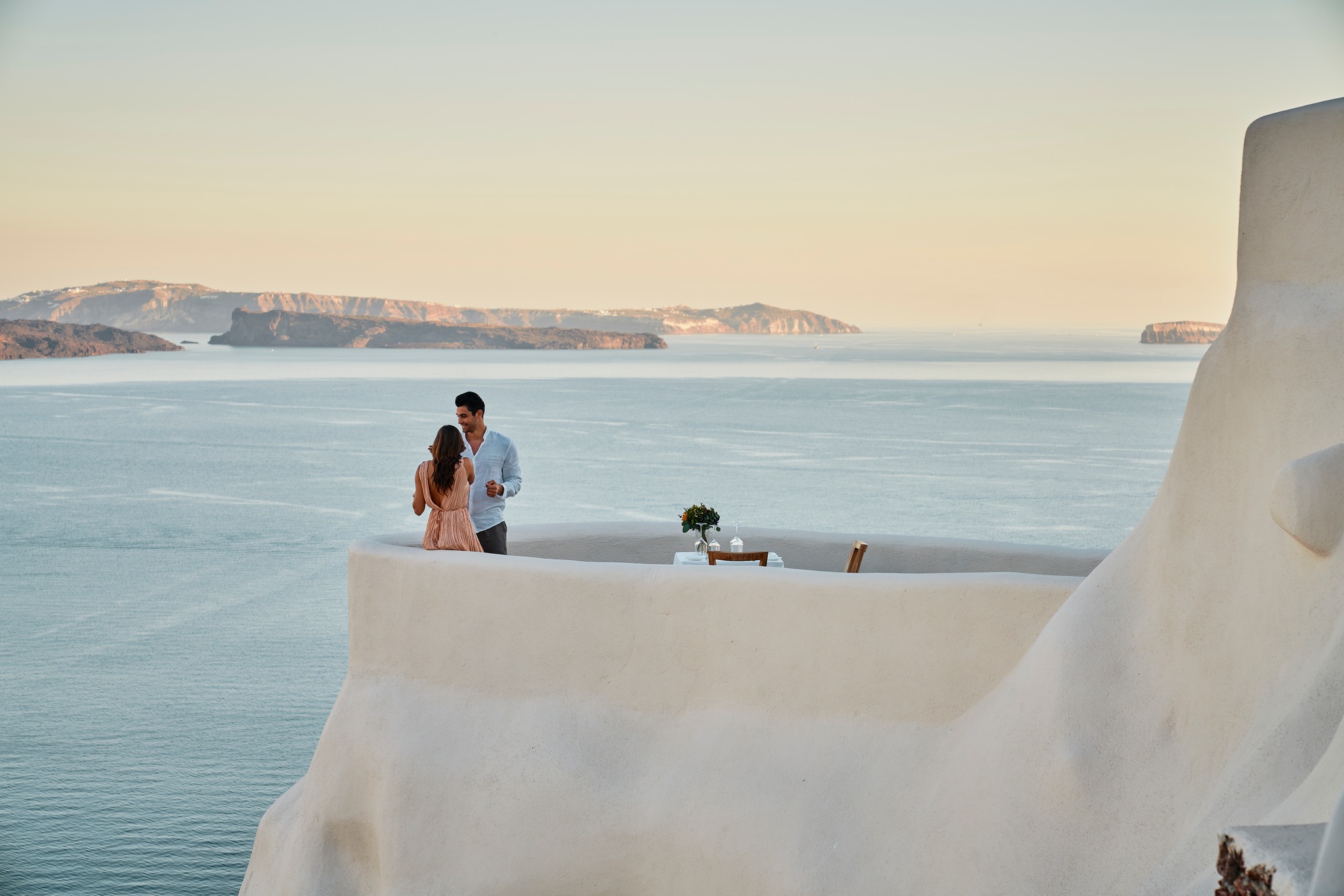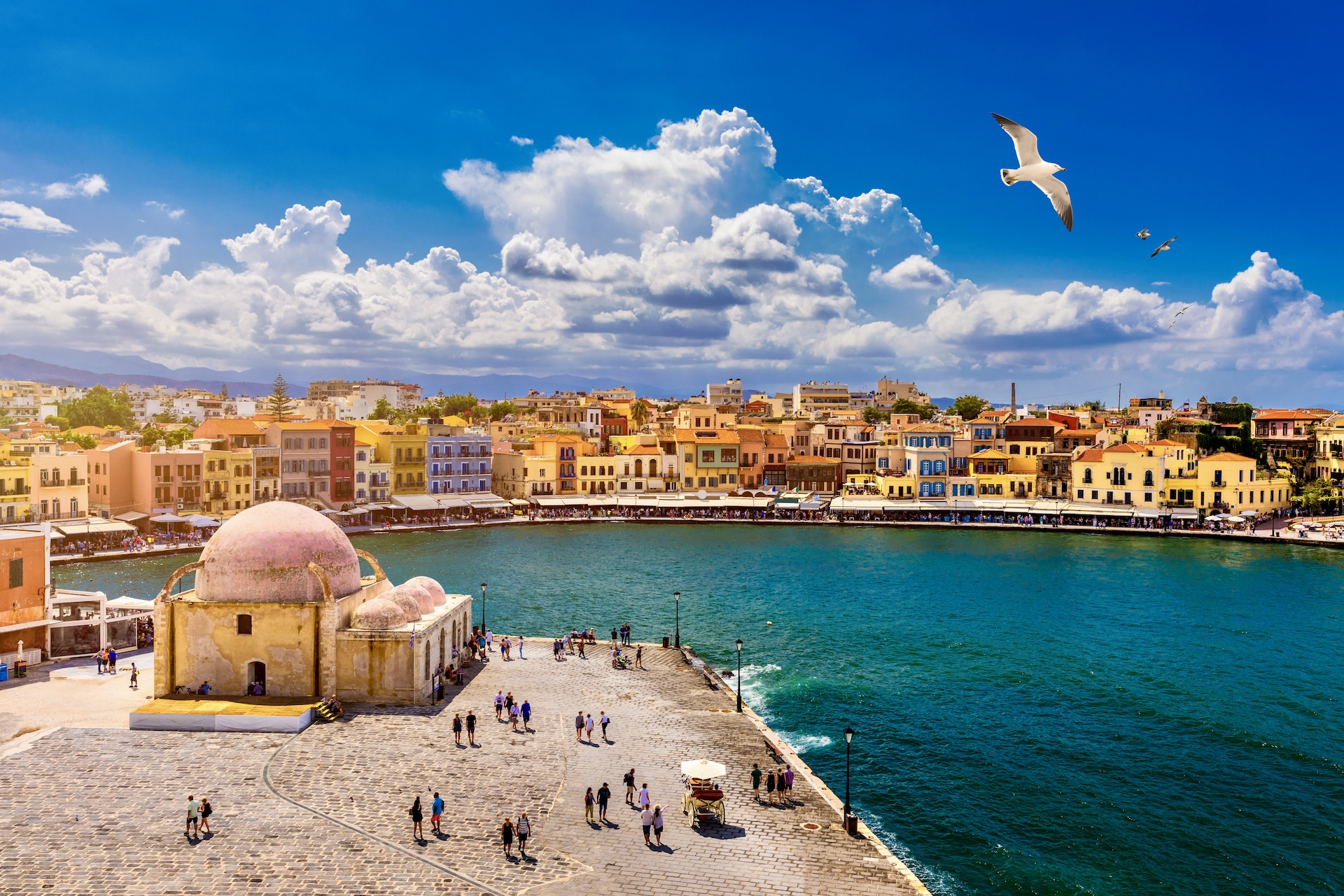Using the term “unique” is risky as it can often be contradicted, turning it into an exaggeration, even inaccuracy.
In the case of Lake Kournas, however, Crete’s geography, itself, makes the term credible as the lake is the island’s only natural lake with fresh water. This may seem surprising for a place of such great land mass. However, due its location, width and weather conditions, Crete has limited water sources. Though various smaller lakes are scattered at various spots on the island, they are either artificial or filled with brackish water, which puts Lake Kournas in a category of its own.
Besides its natural formation and fresh water, this specific lake is also endowed with alluring white sandy shores, an impressive feature for the small number of summertime visitors. Kournas has remained largely unknown. Its close proximity to the Libyan Sea’s coastline, just 2.5 km to the south, creates a beach-like impression at the lake, even though it is situated at a mountain location.
Name, legends
Though, according to one legend, the lake was named after the Hania region’s village Kournas, close to the Rethymno region border, the opposite is also believed to have occurred. The village, according to this latter theory, was named after the lake, from the Arabic word for lake and wash-basin.
This observation takes us back to the early medieval period, a time when Crete was conquered by the Arabs, who established the island as an emirate between 824 and 961. The lake was well-known from as far back as antiquity and, according to sources, was named Korisia.
According to another legend, a blonde girl who once lived in the area desperately sought to save herself from her very own father’s sexual desire. In her despair, she made a wish for the whole area to sink and become a lake, which she would inhabit. Another legend offers a modified version of the biblical account of the Deluge, featuring Noah as the hero of the Flood story. According to the revised story, a priest’s virtuous daughter was the sinful village’s only person to survive the flood. She was then transformed into a rock fairy.
Local legends about the lake continue to emerge, including one claiming it is bottomless, and another according to which the lake contains magnetic fields that prompt a sense of disturbance upon entry into the water.
The lake, sandy beach and surrounding landscape
Despite its close proximity to the sea, Lake Kournas is situated at a semi-mountainous area, on the slopes of Mount Dafnomadara. The lake covers an area of 57.9 hectares, while its maximum dimensions are 1,087 metres in length and 880 metres in width. It is often pear-shaped. The lake’s maximum depth is estimated to be 22.5 metres. Its outlet end ups at a dam, built in the area in 1962.
Lake Kournas is watered by two natural sources, one of the two, Amati, visible during the summer months. The lake’s white sand, covering many lakeside points, is a trademark feature. This phenomenon is attributed to the lake’s changes in water level and dimensions over the course of the year. Its sandy shores are revealed every summer.
As a result of its white sandy shores, Lake Kournas has begun developing into a summer holiday choice, even though it remains largely undiscovered. Do expect to see some beach umbrellas by the lake in the summer, as well as paddle boats for rent. Visitors may also walk around the lake. It takes approximately one hour to cover. In addition, one side of the lake hosts cafes and tavernas with a view. In winter, the lake’s water level rises, the sandy shores disappear, and walking around the lake becomes more difficult.
The lake area’s rich wetland greatly contributes to its overall beauty. Visitors typically marvel at ducks and geese that move about fearlessly. Some 130 bird species are estimated to live in the area, while a number of migratory birds, using the lake as a stopover point during long journeys, have also been spotted. The lake also hosts Mediterranean sand smelt, freshwater blenny, mosquitofish, plenty of eels, common moorhen, European cat snakes, as well as a rare two-coloured turtle species, the Malaclemys terrapin.
Directions to Lake Kourna
Begin from Hania, headed in an easterly direction. The total distance to Lake Kourna is 43 km. The lake is situated 2.5 km northwest of the village Kournas. It is reached via a highway route. Keep a lookout for the related signposts. Missing them will lead to confusion.
A surer route runs from Hania to coastal Georgioupoli, 4 km from the lake. From Georgioupoli, take the country road. Once past a taverna in the area keep a lookout for signposts, 400 metres ahead. They signal both a straight-ahead direction and a right turn to the lake. Do not be confused. Both directions lead to the lake, reaching different sides.
Read also:
A beautiful destination of great ecological importance in Greece
Porto Lagos: The village in Xanthi with the flamingos and the impressive, floating monastery
Kotza Orman: Extensive, jungle-like riverside forest in Greece’s north



